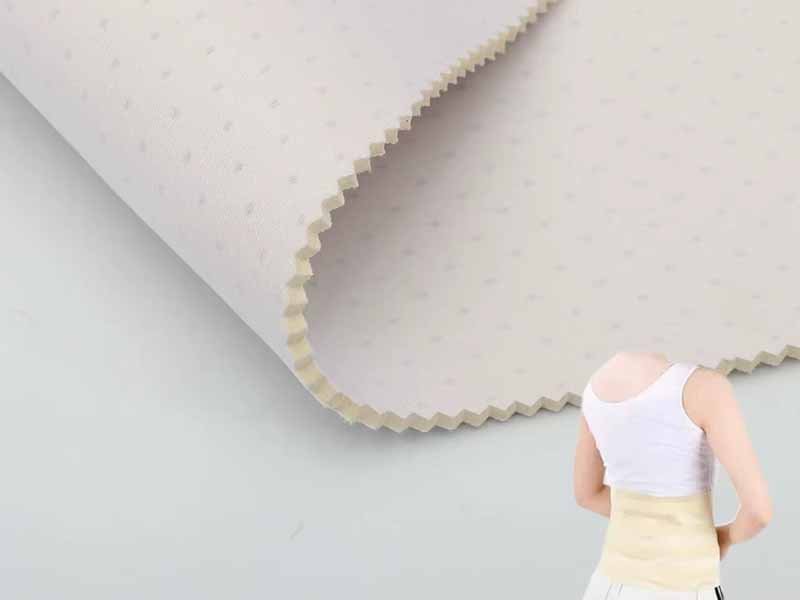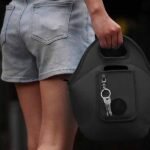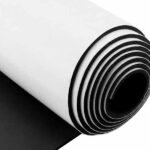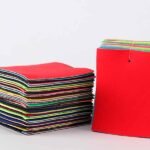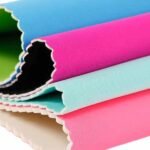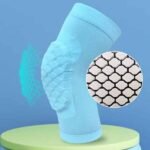Neoprene is everywhere in modern life—from wetsuits and laptop sleeves to medical supports and industrial covers. It’s prized for its durability, stretch, and resistance to water and weather. But one persistent question keeps surfacing: does neoprene contain latex? This concern is especially important for buyers and businesses supplying products to consumers who may have latex allergies.
Pure neoprene is made from synthetic rubber called polychloroprene and does not naturally contain latex. However, some neoprene blends, coatings, or adhesives used during manufacturing may include natural rubber latex. For latex-sensitive users, it’s essential to confirm with the supplier that the neoprene is 100% latex-free or certified hypoallergenic.
This question matters because latex allergies affect up to 6% of the global population, with severe cases leading to anaphylaxis. As one buyer in the medical industry put it, “a small trace of latex in the wrong product can put patients at real risk.” The stakes are high, and businesses cannot afford mistakes.
To fully understand the answer, let’s unpack what neoprene is made of, why it’s often confused with latex, and how brands and manufacturers like Szoneier help global buyers secure safe, latex-free neoprene products.
What Is Neoprene Made Of?
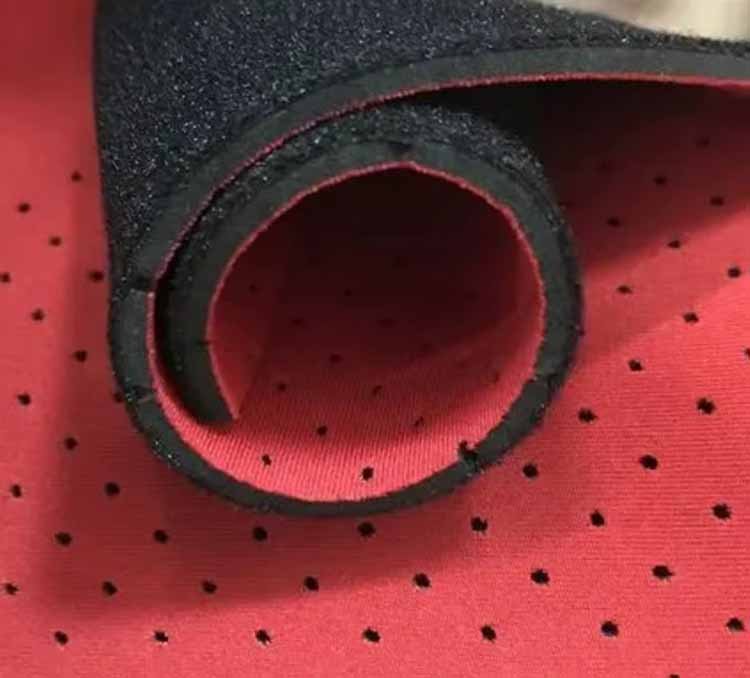
Neoprene is made from polychloroprene, a synthetic rubber created through the polymerization of chloroprene. Unlike natural rubber latex, neoprene is man-made and does not come from plants. It offers water resistance, insulation, and flexibility, making it popular for wetsuits, gloves, covers, and medical gear.
Neoprene was first developed in 1930 by DuPont as an alternative to natural rubber. Instead of harvesting sap from rubber trees, chemists synthesized a durable rubber-like material in the lab: polychloroprene. This innovation solved supply chain challenges and created a versatile fabric that could withstand oil, ozone, and temperature extremes.
The key difference between neoprene and latex lies in their origins. Latex is harvested from Hevea brasiliensis trees, making it a natural product with proteins that trigger allergic reactions in sensitive people. Neoprene, by contrast, is entirely synthetic. Its molecular structure gives it stretch and resilience but does not contain the allergy-causing proteins found in natural latex.
Neoprene is produced in large sheets and then laminated with fabrics like nylon, polyester, or spandex for different applications. For example:
| Application | Neoprene Type | Key Feature |
|---|---|---|
| Wetsuits & gloves | Closed-cell | Thermal insulation, buoyancy |
| Laptop sleeves | Open-cell | Soft cushioning |
| Medical braces | Latex-free | Hypoallergenic, breathable |
This versatility is what has made neoprene so widespread across industries. Yet the fact that both neoprene and latex share flexibility and rubber-like texture has caused confusion in the marketplace. Many consumers assume they’re the same thing—but chemically, they’re very different.
For buyers sourcing neoprene products, understanding this distinction is crucial. Whether you’re ordering custom wetsuits, bags, or medical gear, requesting the material composition and certification from the supplier ensures you get exactly what your customers need—without risk of allergic reactions.
Does Neoprene Have Latex in It?
Neoprene itself does not contain latex, but some neoprene products may use latex adhesives or blended rubber during production. Latex-sensitive users should confirm with manufacturers whether the neoprene is fully latex-free and certified safe.
Here’s where the story gets nuanced. While pure neoprene rubber contains no latex, the finished product you buy might not be 100% neoprene. During lamination, stitching, or adhesive bonding, manufacturers sometimes use natural rubber latex-based glues. In cheaper products, some suppliers even blend neoprene with natural rubber to reduce costs.
This is why reports of allergic reactions to “neoprene” exist, despite the base material itself being latex-free. The problem usually lies not in the neoprene sheet, but in the processing stage.
For example:
- Low-cost wetsuits may include latex-based adhesive layers between neoprene and fabric lining.
- Gloves marketed as neoprene may actually be neoprene-latex blends.
- Medical braces are often carefully labeled “latex-free neoprene” to reassure users.
The stakes are high. In the U.S. alone, latex allergies affect 1–2% of the general population, and up to 17% of healthcare workers. For businesses selling neoprene-based products, even trace amounts of latex can mean lost sales, liability issues, or customer health risks.
This is why reputable suppliers like Szoneier explicitly provide latex-free neoprene solutions. By sourcing raw neoprene directly from certified factories and controlling adhesives used in production, we can guarantee products safe for latex-sensitive users.
As a buyer, you should always ask:
- Is this neoprene certified latex-free?
- Are adhesives used in lamination free from latex?
- Can the supplier provide third-party test reports?
By making latex content transparency a sourcing priority, you protect both your brand reputation and your end users’ safety.
Why Do People Confuse Neoprene with Latex?
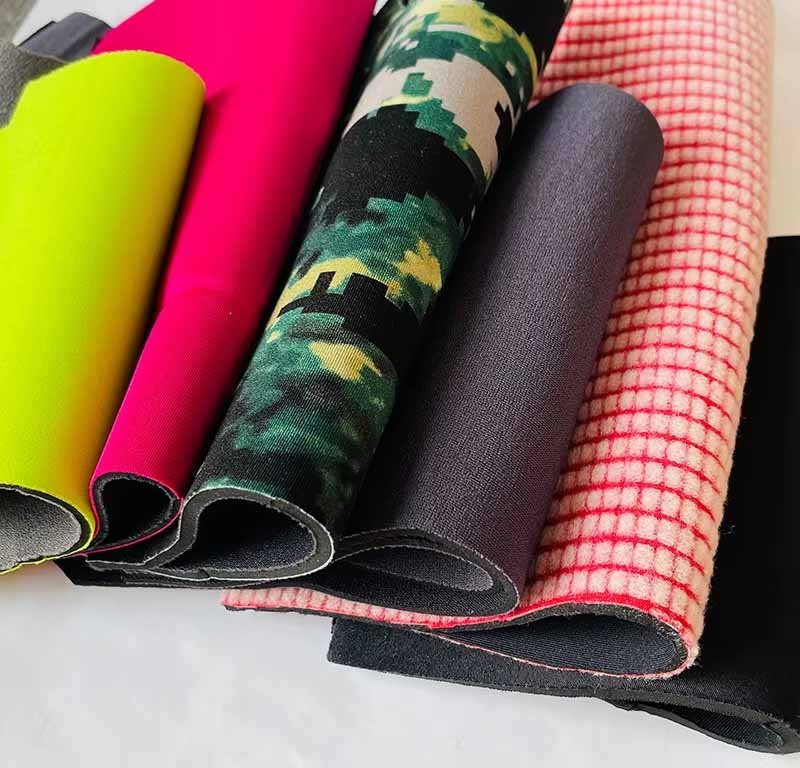
People confuse neoprene with latex because both look and feel like rubber, share stretch and flexibility, and are used in gloves, wetsuits, and medical gear. However, neoprene is synthetic polychloroprene, while latex is natural rubber containing allergy-triggering proteins.
The confusion between neoprene and latex isn’t surprising. At first glance, they look similar—smooth, elastic, and rubber-like. When people see a wetsuit or medical brace, they may simply assume it’s “latex rubber,” because for decades natural latex was the dominant material in stretchy products.
The overlap in applications contributes to the misunderstanding. Both materials are used in:
- Gloves (neoprene gloves for water sports vs latex gloves for healthcare)
- Protective wear (neoprene wetsuits vs latex hazmat suits)
- Medical supports (neoprene braces vs latex tubing)
Another factor is mislabeling or vague product descriptions. Some suppliers on low-cost platforms market “rubber” products without specifying whether the material is natural latex or synthetic neoprene. This ambiguity can be dangerous for consumers with latex allergies.
Chemically, though, they are very different. Neoprene is man-made from chloroprene monomers, while latex is tapped from rubber trees. One contains no plant proteins, the other does. Yet the shared qualities of flexibility and resilience create a strong association in consumer minds.
The danger comes when this confusion prevents accurate allergy assessment. A parent buying a neoprene knee brace for a child with latex allergies might avoid it unnecessarily—or worse, buy a mislabeled product that contains latex traces. Both outcomes undermine consumer trust.
For businesses, the takeaway is clear: transparency matters. By explicitly stating “latex-free neoprene” in product descriptions and providing material certifications, brands can eliminate confusion and position themselves as trustworthy suppliers.
How Can You Tell If Neoprene Products Contain Latex?
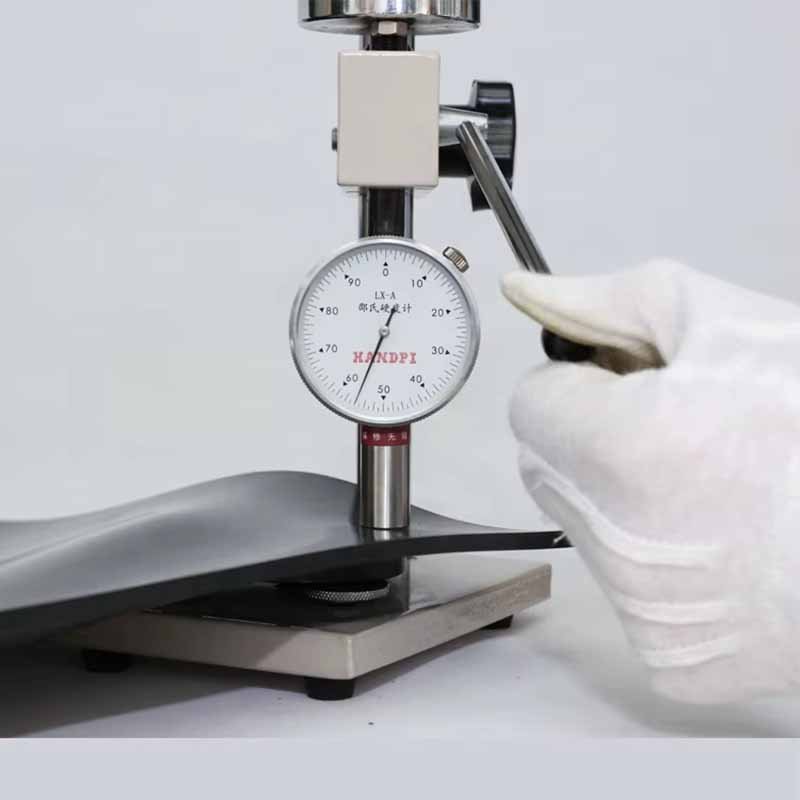
To check if neoprene contains latex, review supplier labels, request certification, and ask about adhesives used in lamination. Latex-free products are often clearly marked, while uncertified items may require third-party testing.
Identifying whether neoprene products contain latex is not always straightforward, but several reliable strategies exist:
- Labeling & Marketing Claims Reputable manufacturers often highlight “latex-free” on packaging. In industries like medical or sports gear, this claim is not just marketing—it’s a legal and safety necessity.
- Supplier Transparency Serious buyers should always ask suppliers about the entire production process, not just the neoprene sheet. Questions should cover:
- Adhesives used in lamination.
- Whether fabrics are bonded with natural latex.
- Certifications available (ISO, OEKO-TEX, REACH).
- Third-Party Testing For large orders, professional buyers often request independent lab tests. These tests can detect latex proteins at trace levels, providing confidence before distribution.
- Price Signals Ultra-cheap neoprene products are often blended with natural rubber or use low-cost latex glues. While not always obvious, extremely low prices should be a red flag.
Here’s a simple checklist table for buyers:
| Verification Step | Why It Matters |
|---|---|
| Label says “latex-free” | Quick consumer reassurance |
| Supplier confirmation | Ensures adhesives and blends are safe |
| Third-party certification | Provides documented proof for large buyers |
| Market reputation | Trusted brands rarely risk liability issues |
By systematically checking these points, buyers reduce risk and ensure compliance with safety expectations in markets like the EU and U.S., where liability for mislabeling can be severe.
What Health Risks Exist if Neoprene Has Latex?
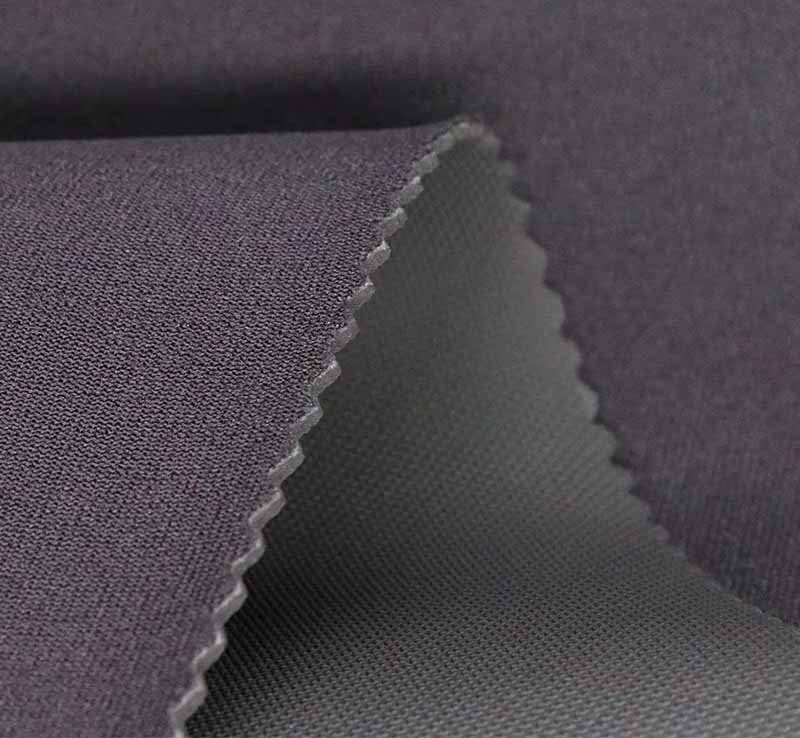
If neoprene contains latex, users with latex allergies risk skin irritation, rashes, or severe reactions like anaphylaxis. Businesses selling uncertified neoprene risk liability, returns, and lost customer trust.
The presence of latex in neoprene products poses health risks for a significant portion of the population. While mild latex sensitivity may cause itchiness or redness, severe cases can escalate to life-threatening reactions.
According to the American College of Allergy, Asthma, and Immunology:
- 1–6% of the general population has latex allergies.
- 8–17% of healthcare workers are affected due to frequent exposure.
Symptoms include:
- Contact dermatitis (itchy skin, blisters, rash).
- Respiratory issues (sneezing, runny nose, asthma-like symptoms).
- Systemic anaphylaxis (swelling, difficulty breathing, shock).
For businesses, the consequences are not just medical—they’re commercial. A single misstep in sourcing could lead to:
- Product recalls, which are costly and damage brand image.
- Legal liability, especially in markets with strict consumer protection laws.
- Loss of trust, as sensitive customers often share bad experiences widely.
Consider a real-world scenario: a gym chain distributes “neoprene” fitness gloves to members. If even a small percentage of users experience allergic reactions due to hidden latex content, the reputational cost far outweighs the savings from a cheaper supplier.
This is why many hospitals and schools now mandate latex-free neoprene in procurement policies. For buyers in sportswear, medical, or lifestyle products, this trend is both a challenge and an opportunity—brands that guarantee safety can win market share by marketing their products as allergy-safe.
The lesson? Don’t just assume neoprene is automatically latex-free. Responsible sourcing means verifying the full supply chain, from raw neoprene sheet to adhesives used in bonding.
Which Neoprene Alternatives Are Latex-Free?
Latex-free alternatives to neoprene include medical-grade neoprene, EPDM rubber, silicone, and thermoplastic elastomers (TPE). These materials provide similar flexibility and durability without the allergy risks of natural latex.
Although neoprene itself is latex-free, buyers often explore alternatives when sourcing for highly sensitive markets such as healthcare, baby products, or food-contact applications. These alternatives offer peace of mind and may even perform better in specific environments.
- Medical-Grade Neoprene
- Produced under strict quality controls.
- Specifically tested and certified latex-free.
- Common in orthopedic supports, hospital gear, and personal protective equipment.
- EPDM (Ethylene Propylene Diene Monomer Rubber)
- Excellent resistance to UV, ozone, and weathering.
- Popular for outdoor covers, automotive seals, and industrial gaskets.
- Softer feel compared to neoprene, but less insulating.
- Silicone Rubber
- Hypoallergenic and highly resistant to heat and chemicals.
- Perfect for medical tubing, baby products, and high-temperature environments.
- More expensive than neoprene, but ideal for premium markets.
- TPE (Thermoplastic Elastomers)
- Lightweight, recyclable, and versatile.
- Used in sports gear, footwear, and flexible grips.
- Lower cost, but may not offer the same durability as neoprene.
| Material | Allergy Safety | Key Strengths | Typical Applications |
|---|---|---|---|
| Medical Neoprene | 100% latex-free | Certified for safety | Healthcare gear, braces |
| EPDM | Latex-free | UV & weather resistance | Outdoor covers, automotive |
| Silicone | Hypoallergenic | Heat/chemical resistance | Baby goods, medical tubing |
| TPE | Latex-free | Recyclable, lightweight | Sports gear, grips, footwear |
For brands sourcing custom products, choosing between neoprene and its alternatives depends on end-user needs, regulatory environment, and budget. A surf gear company may still prefer closed-cell neoprene for insulation, while a baby product manufacturer may opt for silicone due to hypoallergenic properties.
Are All Neoprene Gloves, Covers, and Wetsuits Safe for Latex-Sensitive Users?
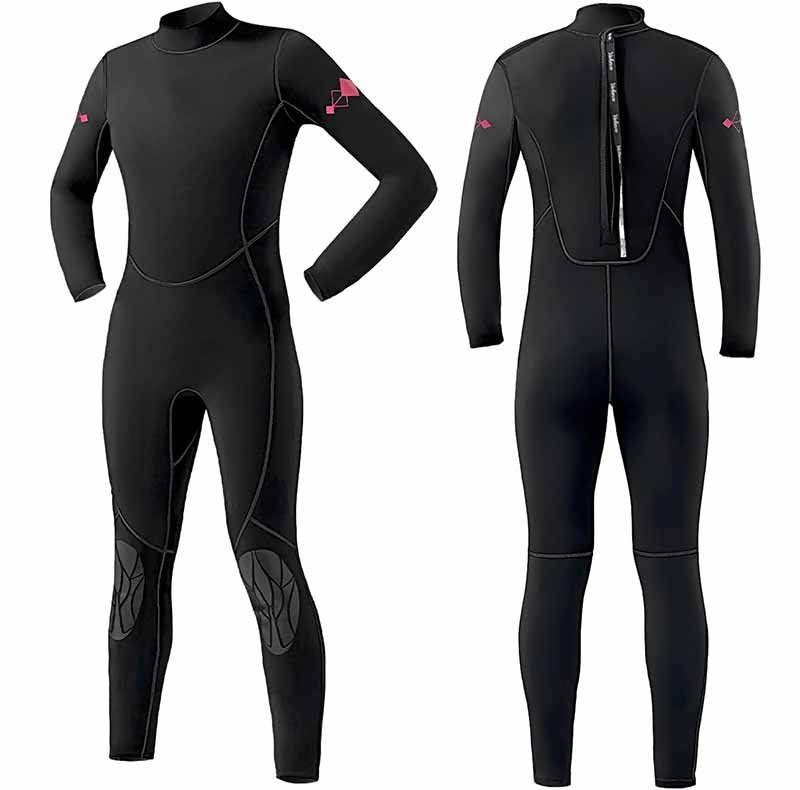
Not all neoprene products are safe for latex-sensitive users. While neoprene itself is latex-free, some gloves, covers, and wetsuits may use latex adhesives or rubber blends. Always check certifications and supplier guarantees.
The short answer is no—not every neoprene product is automatically safe for people with latex allergies. The base neoprene sheet is latex-free, but the final product depends on how it’s manufactured.
- Gloves: High-quality neoprene gloves used in water sports or labs are typically latex-free. However, cheaper gloves may include latex blends to cut costs.
- Covers and sleeves: Laptop covers, bottle sleeves, or industrial cases are often laminated with adhesives, which may contain latex unless specified otherwise.
- Wetsuits: Premium wetsuits from reputable brands use latex-free glues, but budget models may not.
The market reflects this divide. In the medical industry, products are clearly labeled “latex-free” due to regulatory requirements. In consumer markets, however, labeling may be vague or absent.
This inconsistency is why buyers should:
- Ask for documentation – A reputable factory should provide OEKO-TEX, REACH, or ISO certifications.
- Clarify adhesive use – Ensure bonding glues are free from latex.
- Check supplier track record – Long-standing suppliers like Szoneier specialize in exporting to Europe and North America, where compliance is strictly enforced.
Real-world consequences of ignoring this step are severe. For example, a sports retailer in the EU faced a costly recall in 2023 after customers reported allergic reactions to “neoprene” gloves that contained latex adhesives. This case highlights the risks of choosing low-cost, uncertified suppliers.
Ultimately, latex-sensitive safety comes down to supplier reliability. Partnering with a factory that controls raw material sourcing and adhesive selection ensures your products meet global safety standards.
How to Choose Safe Neoprene Products for Your Brand or Business?
Choose safe neoprene products by verifying latex-free certification, checking adhesives, and working with reliable suppliers. Prioritize ISO, OEKO-TEX, and REACH compliance to ensure customer safety.
When selecting neoprene products for your brand, the goal isn’t just performance—it’s safety and compliance. Today’s buyers must meet both customer expectations and regulatory demands.
Here’s a step-by-step approach:
- Request Certifications
- Look for OEKO-TEX Standard 100 (tests for harmful substances).
- REACH compliance (ensures chemical safety in Europe).
- ISO 9001 or equivalent (manufacturing quality assurance).
- Evaluate Supplier Transparency
- Does the supplier provide clear material breakdowns?
- Can they specify adhesive types?
- Do they offer independent test reports?
- Balance Cost, MOQ, and Lead Time
- High-quality latex-free neoprene may cost slightly more.
- Reliable suppliers like Szoneier offer low MOQ and fast sampling, reducing risk while enabling smaller brands to test markets.
- Check Customization Options
- Ensure the supplier can deliver private label or OEM/ODM products.
- Ask about fabric lamination, thickness, printing, and packaging customization—all while staying latex-free.
Here’s a simple decision framework:
| Factor | What to Look For | Why It Matters |
|---|---|---|
| Certification | OEKO-TEX, REACH, ISO | Guarantees safety & quality |
| Adhesives | Confirm latex-free bonding | Prevents hidden allergy risk |
| MOQ & lead time | Flexible, fast sampling | Lower financial risk |
| Supplier expertise | Years of neoprene export experience | Ensures reliability |
By taking these steps, buyers can confidently market their neoprene products as safe, high-quality, and globally compliant—qualities that win trust from both retailers and end-users.
FAQ: Neoprene and Latex Safety
1. Is neoprene completely latex-free?
Yes. Pure neoprene, made from polychloroprene, contains no natural latex proteins. However, some manufacturers use latex adhesives or blends in production, so always confirm “latex-free” labeling and certifications.
2. Why do some people think neoprene causes latex allergies?
Because neoprene looks and feels similar to latex rubber, and some products use latex adhesives, people sometimes misattribute allergic reactions to neoprene itself. In reality, the issue often lies in hidden latex content during manufacturing.
3. How can I check if a neoprene product is safe for latex-sensitive users?
Ask the supplier about adhesives, review “latex-free” labeling, and request certifications like OEKO-TEX or REACH. For large orders, independent lab testing provides additional assurance.
4. What industries require latex-free neoprene products?
Healthcare, education, and hospitality often mandate latex-free products due to allergy risks. Sportswear, outdoor gear, and consumer accessories increasingly highlight “latex-free” as a selling point.
5. Are wetsuits and neoprene gloves always latex-free?
Not always. Premium brands and certified suppliers use latex-free adhesives, but budget versions may contain latex. Always verify with the manufacturer—especially if selling to allergy-sensitive markets.
6. What are the best latex-free alternatives to neoprene?
Medical-grade neoprene, EPDM rubber, silicone, and thermoplastic elastomers (TPE) are all latex-free alternatives. The best choice depends on the application—for example, silicone for baby products, EPDM for outdoor covers.
7. Does latex-free neoprene cost more?
Generally, yes. Latex-free adhesives and certifications increase production costs slightly. However, the extra expense is offset by customer safety, reduced liability, and stronger market positioning.
8. Why should I choose Szoneier for neoprene sourcing?
Szoneier controls the full supply chain—from raw neoprene to final product. We guarantee latex-free options, provide free samples, offer low MOQs, and back our products with global certifications. Our expertise ensures you deliver safe, high-quality neoprene goods to your market.
Conclusion
Neoprene has become a cornerstone material in industries ranging from sports and fashion to healthcare and industrial protection. Yet the persistent question—does neoprene have latex in it—reveals how important transparency and safety have become in global sourcing.
The truth is straightforward: pure neoprene is latex-free, but finished products may contain latex if manufacturers use latex-based adhesives or blends. For businesses, the implications are significant. Missteps can lead to recalls, liability, and customer health risks, while careful sourcing unlocks opportunities to market products as safe, certified, and allergy-friendly.
That’s where Szoneier comes in. With over 18 years of neoprene R&D and manufacturing expertise, we provide international buyers with:
- 100% latex-free neoprene options for sensitive applications.
- Low MOQ and rapid sampling, perfect for both startups and established brands.
- Custom OEM/ODM solutions across bags, gloves, covers, wetsuits, and more.
- Certifications (ISO, OEKO-TEX, REACH) to guarantee compliance.
If you’re looking for a trusted factory partner to deliver neoprene products that are safe, customizable, and market-ready, Szoneier is here to help.
Contact us today at info@neoprene-bag.com or call (+86) 13823134897 to request a free sample and quotation. Let’s design neoprene solutions that meet your brand’s needs—with zero compromises on safety.

